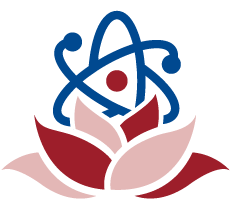| basophil མཐིང་ལེན། | biol. A type of white blood cell which has granules in its cytoplasm and contains histamine and heparin. | ཕྲ་ཚིའི་ནང་དུ་ཟེགས་ཆུང་ཡོད་ཅིང་ཕྲ་ཕུང་གི་ནང་དུ་ཧི་སི་ཊ་མིན་དང་ཧེ་པ་རིན་ལྡན་པའི་ཁྲག་དཀར་ཕྲ་ཕུང་གི་རིགས་ཤིག |
| basolateral side མཐིལ་གྱི་གཞོགས་ངོས། | neurosci. | |
| basolateral amygdala འཕྲེད་ཞབས་ཁམ་ཙིག་ཀླད་ཞོ། | neurosci. | |
| Basilosaurus རྩངས་རྒྱལ། རྩངས་པའི་རྒྱལ་པོ། | biol. | |
| basilar membrane གཞི་སྐྱི། | biol. A membrane in the cochlea that bears the organ of Corti. | རྣ་ལྗོན་ནང་གི་ཁོར་ཊིའི་དབང་པོ་གནས་སའི་སྐྱི་མོ་ཞིག |
| basilar artery ཀླད་ཞབས་འཕར་རྩ། | biol. An unpaired artery that is formed by the union of the two vertebral arteries, runs forward within the skull just under the pons, divides into the two posterior cerebral arteries, and supplies the pons, cerebellum, posterior part of the cerebrum, and the inner ear | སྒལ་ཚིགས་ཀྱི་འཕར་རྩ་གཉིས་ཀྱིས་གྲུབ་པའི་འཕར་རྩ་ཡ་རྐྱང་ཞིག་ལ་གོ་བ་དང་། ཀླད་ཟམ་གྱི་འོག་ཏག་ཏག་ནས་ཀ་ལིའི་ནང་དུ་རྒྱུ་ཞིང་ཀླད་ཆེན་འཕར་རྩ་རྒྱབ་མ་གཉིས་སུ་གྱེས་ཏེ་ཀླད་ཟམ་དང་། ཀླད་སྙིང་། ཀླད་ཆེན་གྱི་རྒྱབ་ངོས། ནང་རྣ་བཅས་སུ་ཁྲག་མཁོ་སྤྲོད་བྱེད། |
| basicity བུལ་ཤེད། | chem. The quality, state, or degree of being a base | བུལ་རྫས་ཡིན་པའི་སྤུས་ཀའམ་གནས་བབ། ཡང་ན་ཚད་གཞི་ལ་གོ |
| basic genetic principles རིགས་རྫས་ཀྱི་གཞི་རྩའི་རྩ་འཛིན། | biol. | |
| basel nucleus ཞབས་གནས་གོང་བུ། | neurosci. Any of several masses of gray matter embedded in the cerebral hemispheres that are involved in the regulation of voluntary movement. | ཀླད་ཆེན་ཟླུམ་ཕྱེད་ཀྱི་ནང་དུ་ཡོད་ཅིང་ཆེད་སྒུལ་འགུལ་སྐྱོད་ཚོད་འཛིན་དང་འབྲེལ་བ་ཡོད་པའི་སྐྱ་རྫས་ཀྱི་གོང་བུ་དུ་མ་ཡོད་པའི་གྲས་ཀྱི་གང་རུང་རུང་ཞིག |
| baseball game གཞི་གྲུག་རྩེད་མོ། | phys. A team game with nine players on each side, played on a field with four bases connected to form a diamond. | རུ་མི་དགུ་རེ་ཡོད་པའི་རུ་ཁག་གཉིས་ཀྱིས་རྡོ་རྗེ་ཕ་ལམ་གྱི་དབྱིབས་སུ་གྲུབ་པའི་གཞི་རྟེན་བཞི་དང་ལྡན་པའི་རྩེད་ཐང་དུ་རྩེད་བའི་རུ་ཁག་གི་རྩེད་མོ་ཞིག |
| baseball གཞི་གྲུག གཞི་གྲུག་པོ་ལོ། | phys. The hard ball used in baseball. | གཞི་གྲུག་རྩེད་མོ་རུ་བེད་སྤྱོད་བྱེད་པའི་པོ་ལོ་མཁྲེགས་པོ་ཞིག |
| base pair གཞི་ཟུང། བུལ་ཟུང། | biol. A pair of complementary bases in a double-stranded nucleic acid molecule, consisting of a purine in one strand linked by hydrogen bonds to a pyrimidine in the other. Cytosine always pairs with guanine, and adenine with thymine (in DNA) or uracil (in RNA). | ཉག་མ་གཅིག་གི་སྟེང་དུ་ཡོད་པའི་པུ་རིན་དེ་ཉག་མ་གཞན་དེའི་སྟེང་དུ་ཡོད་པའི་པི་རི་མི་ཌིན་ལ་ཡང་རླུང་འཆིང་བས་མཐུད་སྦྱོར་བྱས་ནས་གྲུབ་ཅིང་ཉག་ཟུང་གི་ངོ་བོར་ཡོད་པའི་ཉིང་སྐྱུར་འདུས་རྡུལ་དུ་ཡོད་པའི་ཁ་སྐོང་གཞི་ཟུང་ཞིག་ལ་ཟེར། སེ་ཊོ་སིན་ནི་རྟག་ཏུ་གུ་ཨ་ནིན་དང་ལྷན་དུ་ཆ་སྒྲིག་པར་བྱེད་ལ། ཨེ་ཌི་ནིན་ནི་ཐ་ཡི་མིན་ (ཌི་ཨེན་ཨེ་ཡི་ནང་དུ་) ནམ་ཡུ་ར་སིལ་ (ཨར་ཨེན་ཨི་ཡི་ནང་དུ་) དང་ལྷན་དུ་ཆ་སྒྲིག་པར་བྱེད། |
| base analog གཞི་མའི་ཚབ་རྫས། | biol. A chemical analog of one of the purine or the pyrimidine bases normally found in RNA or DNA. | ཨར་ཨེན་ཨེའམ་ཌི་ཨེན་ཨེ་ཡི་ནང་དུ་ཡོད་པའི་པུ་རིན་གཞི་མའམ་པི་རི་མི་ཌིན་གཞི་མ་གང་རུང་གི་རྫས་སྦྱོར་ཚབ་རྫས་ཤིག་ལ་གོ |
| base བུལ་ཚྭ། | chem. A substance capable of reacting with an acid to form a salt and water, or (more broadly) of accepting or neutralizing hydrogen ions. | སྐྱུར་རྫས་ཤིག་ལ་རྫས་སྦྱོར་བྱས་ཏེ་ཚྭ་དང་ཆུ་གྲུབ་པར་བྱེད་པའམ། (ཁྱབ་ཆེ་བར་སྨྲས་ཚེ་) ཡང་རླུང་གི་གྱེས་རྡུལ་ཞིག་དང་ལེན་བྱེད་པའམ་ཡང་ན་བཏང་སྙོམས་ཀྱི་ངོ་བོར་བཟོ་པའི་ནུས་པ་དང་ལྡན་པའི་བེམ་རྫས་ཤིག |
| Basal nuclei ཞབས་ཚོམ། | Neurosci. | (ཀླད་པའི་ཞབས་ཀྱི་དབང་རྩའི་ཚོམ་བུ།) |
